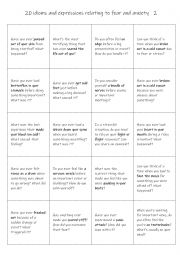
|
B1+-C1 20 idioms and expressions relating to fear and anxiety 2
First, students need to familiarise themselves with the 20 idioms and expressions and their meanings. Then they read the definitions to see which one is being described and write that word in the space provided Answers on page 2.
Level: intermediate
Age: 12-100
Type:
Downloads: 107
|
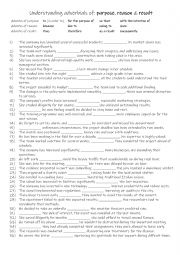
|
B1+ -C1 Understanding 12 adverbials of purpose, reason & result 1
Learning to use adverbials of purpose, reason, and result enhances clarity and coherence in communication. These adverbials allow students to express intentions, causes, and outcomes clearly, making their speech and writing more logical and well-structured. Mastering these adverbials also helps them link ideas smoothly, providing a stronger flow i...
Level: intermediate
Age: 9-100
Type:
Downloads: 105
|
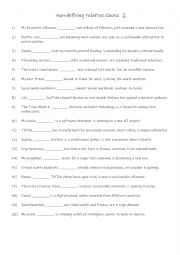
|
Non-defining relative clause 2
Students complete the gap-fill with the correct word. Answers on page 2.
Level: elementary
Age: 10-100
Type:
Downloads: 113
|
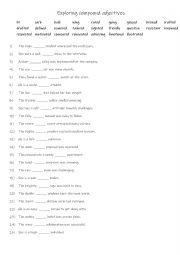
|
Exploring compound adjectives
Students read the sentences, then look from the box of adjectives to find one that would complete the sentence. This worksheet is quite challenging and is suitable for B1+-B2 students. Answers on page 2
Level: intermediate
Age: 12-100
Type:
Downloads: 100
|
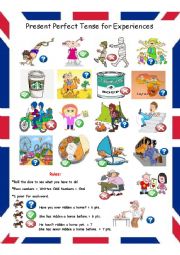
|
Present Perfect Tense for Experiences
An enjoyable speaking and writing supplement to reinforce asking questions, answering using both affirmative and negative sentences. To get a mixture of both oral and written work I normally have something small enough to hide in my hand. If the object is in the hand not selected, they have to write the sentence. To encourage students, I usually gi...
Level: elementary
Age: 9-100
Type: activity-card
Downloads: 271
|
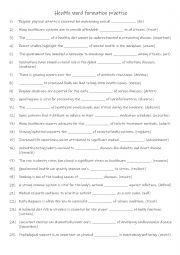
|
B1-B2 Health word formation practise
Understanding word formation allows students to expand their vocabulary, enabling them to express themselves more precisely and creatively. Knowing how to manipulate words helps them create varied sentence structures, making their writing more engaging and dynamic. Mastering word formation is key to achieving higher levels of language proficiency, ...
Level: intermediate
Age: 9-100
Type:
Downloads: 116
|
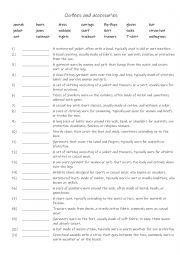
|
A2-B1 Clothes and accessories
Students match the clothes & accessories to their definition. After checking the answers, in pairs or small groups,this worksheet could also be used as a defining relative clause speaking component. Answers on page 2.
Level: elementary
Age: 10-100
Type:
Downloads: 127
|
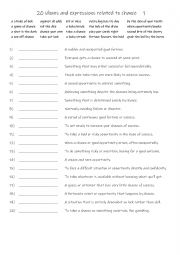
|
B1+-C1 Chance idioms and expressions 1
First, students need to familiarise themselves with the 20 idioms and expressions and their meanings. Then they read the definitions to see which one is being described and write that word in the space provided Answers on page 2.
Level: intermediate
Age: 12-100
Type:
Downloads: 119
|
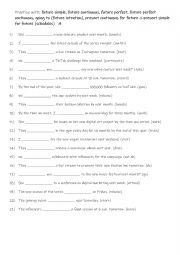
|
B1-B2 Future Simple, Future Continuous, Future Perfect, Future Perfect Continuous, Going to (Future Intention), Present Continuous for Future, Present Simple for Future (Schedules) � 4
First, students need to familiarise themselves with the tenses and check their meaning and use. Then they read the sentences to see which tense is needed to complete the sentence using the given verb in (). Each tense is used 3 times! Answers on page 2.
Level: intermediate
Age: 10-100
Type:
Downloads: 110
|
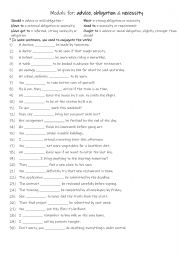
|
A2+-B1+ Modal Verbs for Advice, Obligation, and Necessity
Students familiarise themselves with the 6 modal verbs and their usage. Then they read the sentences to see which modal verb is needed to complete the gap-fill. Answers on page 2.
Level: intermediate
Age: 9-100
Type:
Downloads: 107
|












